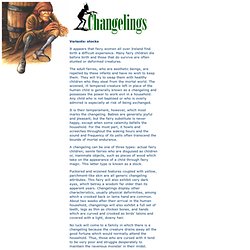

A Brief History of Bloodletting - History in the Headlines. The ancient practice of bloodletting might offer cardiovascular benefits to obese people with metabolic syndrome, a new study published today in the journal BMC Medicine suggests.

As the medical community contemplates its revival, explore this long-abandoned procedure’s age-old history, from its early roots to its use on figures such as George Washington and Marie-Antoinette. Several thousand years ago, whether you were an Egyptian with migraines or a feverish Greek, chances are your doctor would try one first-line treatment before all others: bloodletting. He or she would open a vein with a lancet or sharpened piece of wood, causing blood to flow out and into a waiting receptacle. If you got lucky, leeches might perform the gruesome task in place of crude instruments. Considered one of medicine’s oldest practices, bloodletting is thought to have originated in ancient Egypt.
America’s first president was less fortunate than France’s most infamous queen. 10 Bizarre Medieval Medical Practices. Creepy Medicine is one of the cornerstones of modern civilization—so much so that we take it for granted.

It wasn’t always the case that you could just waltz into a doctor’s office to have them cure what ailed you. In medieval times, for example, things were a lot more dangerous, and a lot stranger. 10 Boar Bile Enemas Enemas in medieval times were performed by devices called clysters. Even kings were high up on the clyster. 9 Urine Was Used As An Antiseptic Though it may not have been common, there is evidence to suggest that urine was occasionally used as an antiseptic in the Medieval Era.
This isn’t quite as insane as it seems: urine is sterile when it leaves the body and may have been a healthier alternative than most water—which came with no such guarantee of cleanliness. 8 Eye Surgery (With A Needle) During the Middle Ages, cataract surgery was performed with a thick needle. Of course, eye surgery changed rapidly once Islamic medicine began to influence European practices. 4 Trepanning. Irish Fairies. Variants: stocks It appears that fairy women all over Ireland find birth a difficult experience.

Many fairy children die before birth and those that do survive are often stunted or deformed creatures. The adult fairies, who are aesthetic beings, are repelled by these infants and have no wish to keep them. They will try to swap them with healthy children who they steal from the mortal world. The wizened, ill tempered creature left in place of the human child is generally known as a changeling and possesses the power to work evil in a household. It is their temperament, however, which most marks the changeling. A changeling can be one of three types: actual fairy children; senile fairies who are disguised as children or, inanimate objects, such as pieces of wood which take on the appearance of a child through fairy magic.
Puckered and wizened features coupled with yellow, parchment-like skin are all generic changeling attributes. "I saw a changeling one time. > > > More on this fairy. 10 Completely Uncanny Superstitions From The Middle Ages. Weird Stuff In the pre-scientific Middle Ages, the world was at the same time both fascinating and frightening.

In the absence of proper knowledge, people had no choice but to fall back on their own imaginations to make sense of the myriad natural phenomena around them. The result was a world where everything seemed magical, a place teeming with angels and demons, fairies and goblins, elves, gnomes, and witches. This list takes us inside the medieval mind and the fears and superstitions through which it tried to explain the world. 10 The Sea In The Sky For this story, we are indebted to English chronicler Gervase of Tilbury and his work Otia Imperiala.
For proof, Gervase offers an episode that took place in an English village. Another tale concerns a merchant who accidentally dropped his knife while out at sea. 9 Omens Of Charlemagne’s Death The Frankish king Charlemagne was crowned Holy Roman Emperor in A.D. 800. 8 Magonia 7 Changelings 6 The Royal Touch 5 The Wild Man Of Orford. The Middle Ages: Feudal Life.